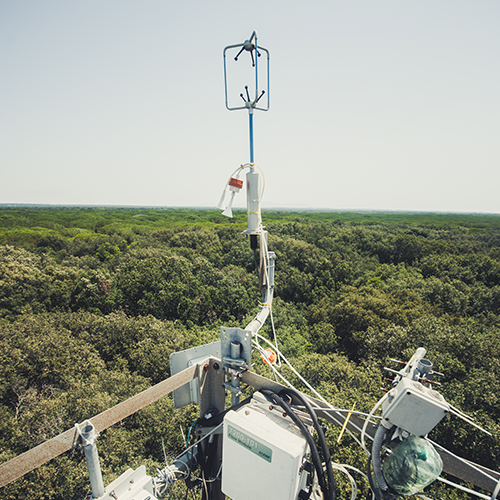
In the upcoming issue of "Science of the Total Environment," a new collaborative publication led by the ICOS ecosystem community has been published. In this in-depth analysis, the researchers analysed data collected from 44 ICOS ecosystem stations and found significant changes in the rate of CO2 uptake in 34 of these stations. This study stands as the pioneering assessment of the potential impacts of COVID-19 lockdowns on terrestrial ecosystem GPP, contributing to a better understanding of the intricate interactions between air quality, environmental factors and ecosystem productivity.
What do lockdowns have to do with photosynthesis?
Carbon dioxide (CO2) uptake by plant photosynthesis, commonly referred to as gross primary production (GPP) at the ecosystem level, is sensitive to many environmental factors. Air pollution is one such factor, as exposure to pollutants can lead to diverse effects on the rate of photosynthetic rates. Air pollution, specifically aerosols can alter the amount of sunlight that reaches the plants, which is important because sunlight (measured as the scattering of solar shortwave irradiance, SWin) is the energy source for photosynthesis.
“While the documented impact of lockdown measures on reducing air pollution is well-known, the specific influence of air quality changes on terrestrial ecosystems’ photosynthetic activity remains uncertain.,” says Angela C. I. Tang, the lead author of this study. She and her colleagues embarked on this endeavour with the goal of shedding light on the effects of these measures on terrestrial ecosystems. They utilised data shared through the ICOS Ecosystem Thematic Centre (ETC) and their network of ecosystem stations, in addition to collaborating with air pollution experts.
Using long term observations from 44 Ecosystem stations to detect anomalies in CO2 uptake during the spring of 2020
Using a 6-year time series from a network of 44 CO2 flux monitoring sites, the authors successfully detected subtle year-to-year changes in spring GPP, and examined the underlying factors driving these changes. Their findings unveiled a significant GPP anomaly in 34 out of 44 European study sites during the spring of 2020. By combining in-situ measurements with pollution and irradiance data, the study revealed that this anomaly can be attributed to two key factors. Specifically, the drought effect was observed in 10 stations, leading to reduced GPP. Conversely, 14 stations exhibited higher GPP during the spring of 2020. This increase can be linked to atmospheric clarity, partly facilitated by reduced pollution during lockdowns, resulting in increased irradiance. The findings also highlight the critical importance of continuous and precise measurements, including auxiliary variables that subtly influence ecosystem functioning.
The study demonstrated the effectiveness of a network of ecosystem-scale CO2 flux monitoring stations in detecting GPP changes during the COVID-19 lockdown in spring 2020. Denis Loustau from INRAE, also ICOS France Focal Point and the project lead of this study, emphasises, “This highlights the critical importance of continuous high-quality monitoring networks such as ICOS, where standardised measurements of fluxes and meteorological drivers can help to understand the complex ecophysiological mechanisms governing the ecosystem responses to environmental changes. He adds, “This study would not have been possible without the datasets shared by the ICOS ecosystem community across Europe.”
"Detection and attribution of an anomaly in terrestrial photosynthesis in Europe during the COVID-19 lockdown" is now available online. The fluxes and meteorological data used in this study can be accessed through the ICOS Carbon Portal.
Photo of the Castelporziano 2 Ecosystem station in Italy by Konsta Punkka for ICOS.